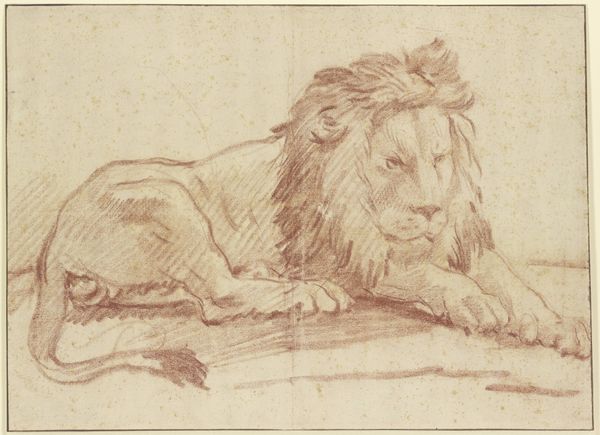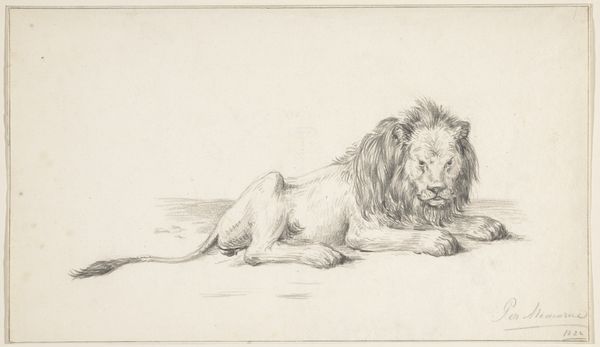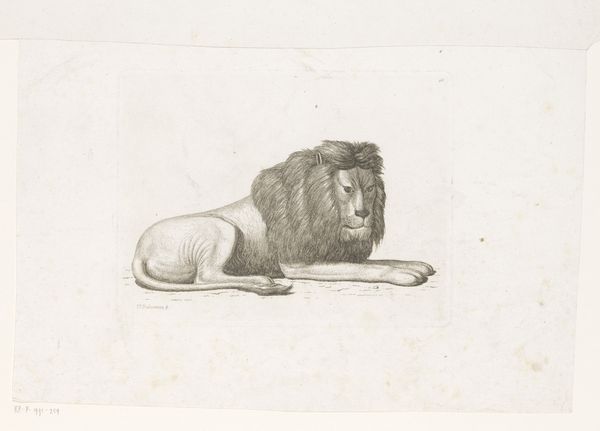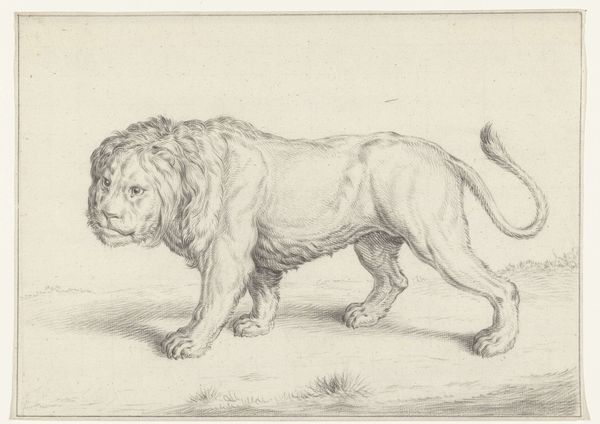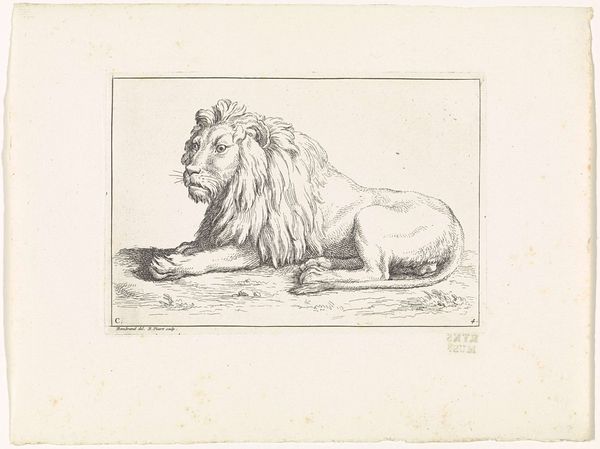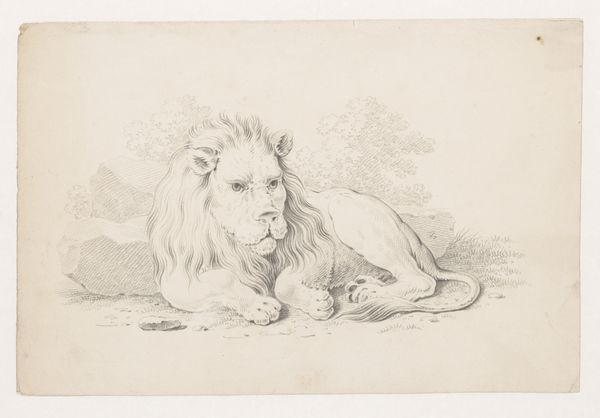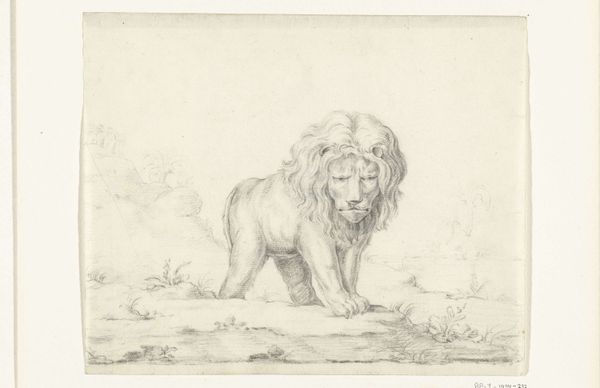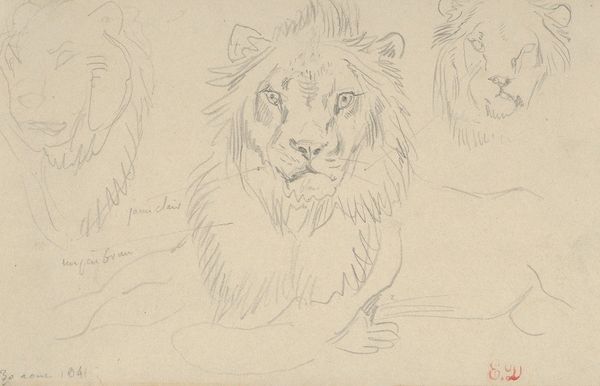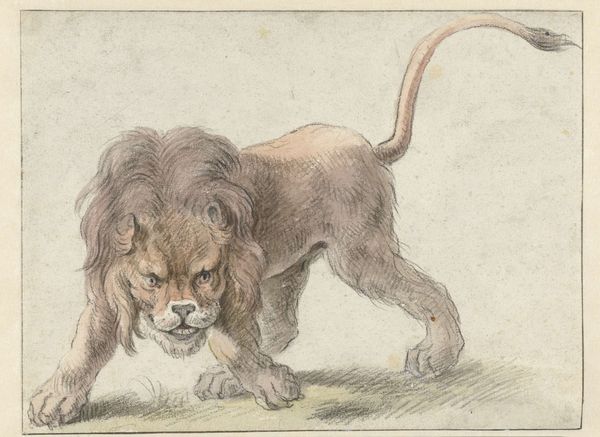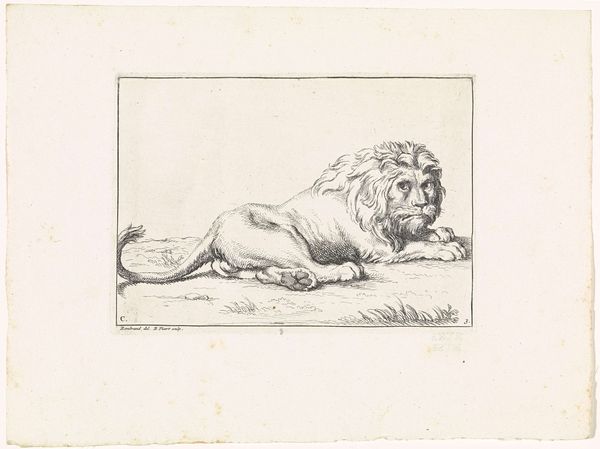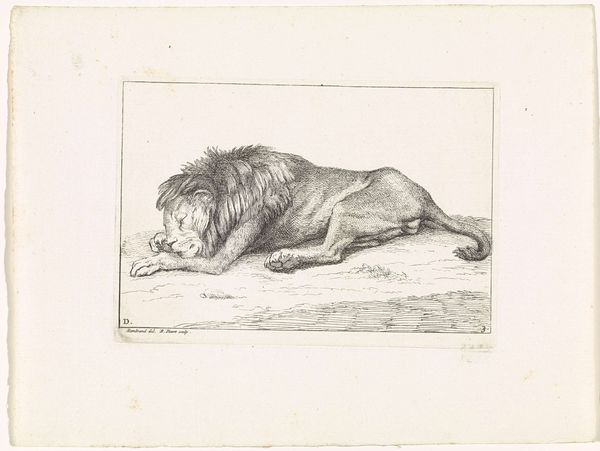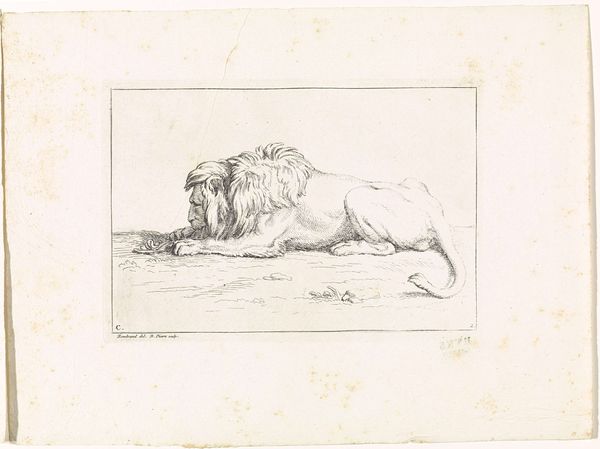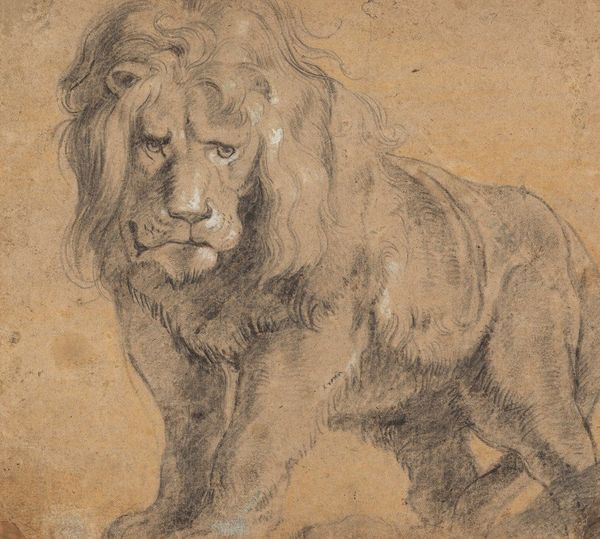
drawing, ink, pen
#
drawing
#
landscape
#
figuration
#
ink
#
pen
Dimensions: height 77 mm, width 136 mm
Copyright: Rijks Museum: Open Domain
Curator: This is Cornelis van Noorde’s “Leeuw,” or “Lion,” a pen and ink drawing dating to 1766. It’s part of the Rijksmuseum collection. Editor: I'm immediately struck by its simplicity, almost a minimalist rendering, despite the detail in the lion’s mane. There’s a raw energy to it. Curator: It’s interesting you say "raw". Thinking materially, it seems like van Noorde really prioritized economy. Using pen and ink on paper, this allowed for easy duplication and distribution. How do you see that interacting with its role, historically? Editor: In the context of the 18th century, it's fascinating to see an image of power reduced to these relatively accessible, reproducible means. Lions symbolized authority and status, often connected to royalty. Presenting that in a readily available format could signal a shifting societal perception. Curator: Exactly. And look at the type of labor involved. Drawings like this likely functioned as studies or models for larger, more ‘important’ artworks, blurring the boundaries between art and craft, especially given their reproductive capabilities through printing technologies. Editor: The relatively small scale, and that it exists on paper—it almost feels like a sketch found in someone's journal—undermines the traditional monumental aspect of royal symbolism, doesn’t it? Curator: Indeed. Consider who the intended audience might be, though. Were these accessible images designed to be consumed by a wider public, or did they primarily circulate within artistic or scholarly circles? It speaks to art’s function during a time when social hierarchies were gradually evolving. Editor: I wonder, given its accessible medium, did images like these also impact the representation of colonial power structures, where the lion served as an emblem? The distribution of such images across empires becomes a pertinent consideration. Curator: Absolutely, the dissemination of this image could also serve political goals tied to the expansion of power. Thinking of this drawing as an artifact, it underscores the significance of exploring how material practices and production methods play into both aesthetics and ideology. Editor: Considering its relatively small scale, it encourages us to reconsider the monumental through the everyday, making even emblems of power feel much more approachable, much more integrated within the daily discourse. Curator: Seeing it through this lens, the ‘Leeuw’ is more than just a portrait of a lion; it’s a statement on accessibility and shifting perceptions of power dynamics. Editor: Precisely! I see it now; this seemingly simple pen-and-ink work presents an intersection of power, artistic practice, and social messaging.
Comments
No comments
Be the first to comment and join the conversation on the ultimate creative platform.
